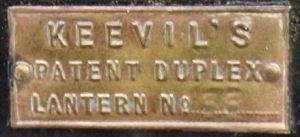|
|
Magic Lanterns, out of the ordinary. |
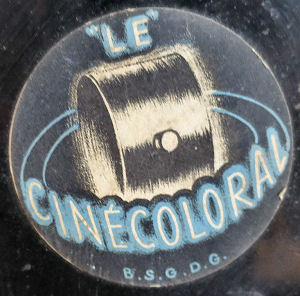  |
Cinécoloral.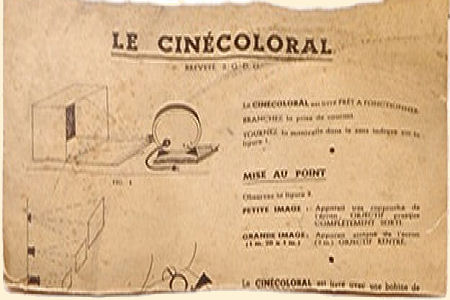 The French “Cinécoloral” is from the 1950's. Like the Mutoscope, it uses the principle of a reel with many flexible opaque cards attached to a circular core and a light inside, and it works on the same principle as the well-known flip book. However, unlike the Mutoscope, the Cinécoloral shows the pictures onto an outer surface thanks to its lens, e.g. the inside of its own box. |
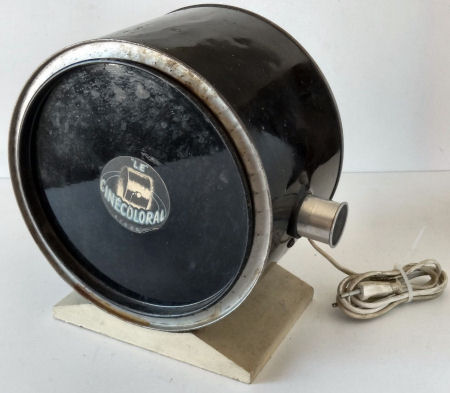 |
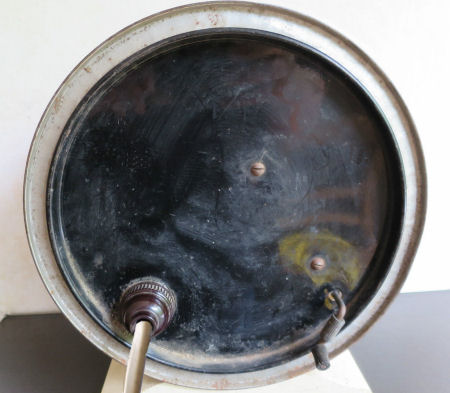 |
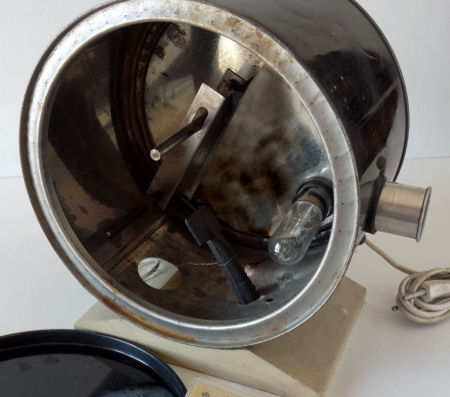 |
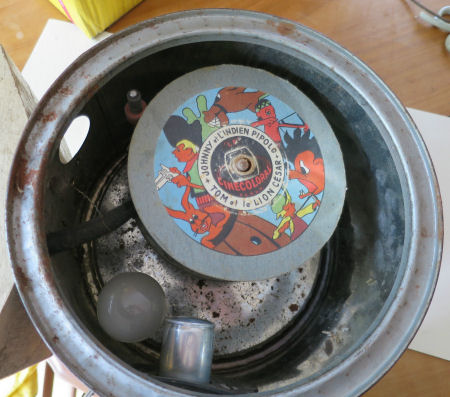 |
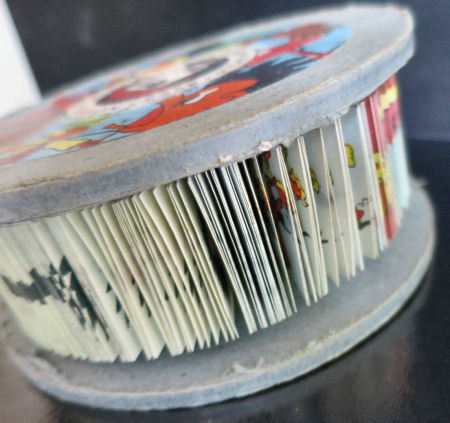 |
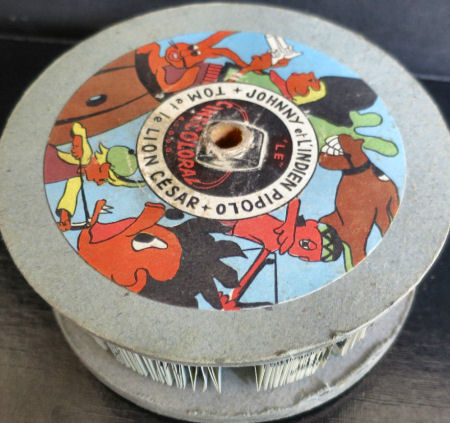 |
 The
cardboard reel type Mutoscope or folioscope, comprises about 400 sheets of images
measuring 35 x 33 mm. On one side the images are in colour, on the other side in
black & white. The
cardboard reel type Mutoscope or folioscope, comprises about 400 sheets of images
measuring 35 x 33 mm. On one side the images are in colour, on the other side in
black & white.The metal "cake box" shaped device projects the light reflected from the images like the episcope projectors for postcards. |
|
|
|
Keevil's Patent Newtonian Duplex Lantern. A complete Lime-light Dissolving Apparatus, most compact in form, at the low price of $75.00 and $100.00; with full oxyhydrogen accoutrements, $130.00 and $150.00. |
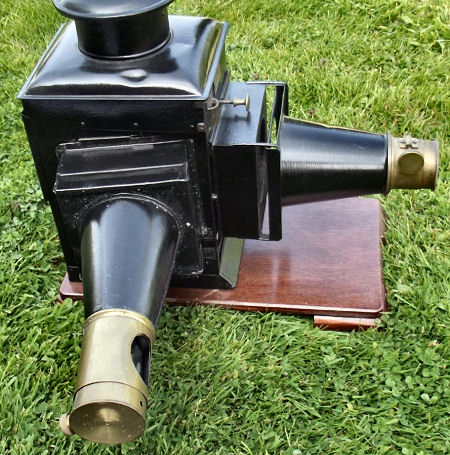 |
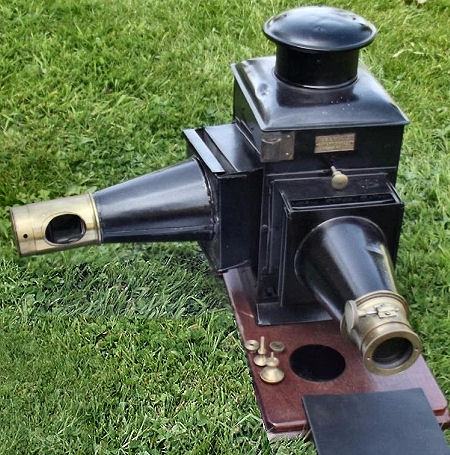 |
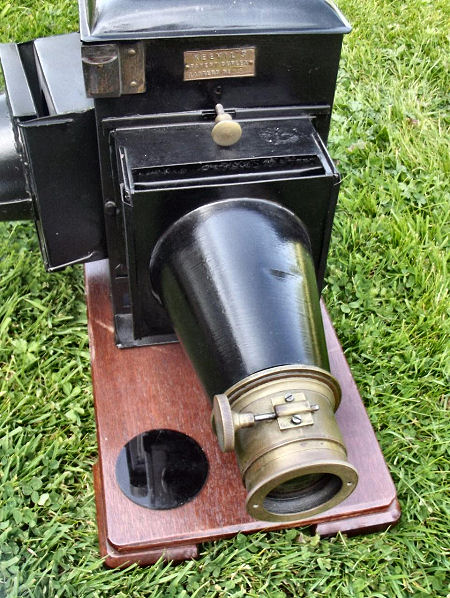 |
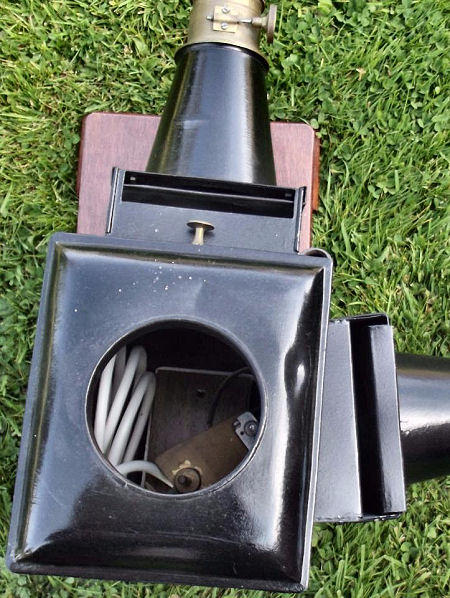 |
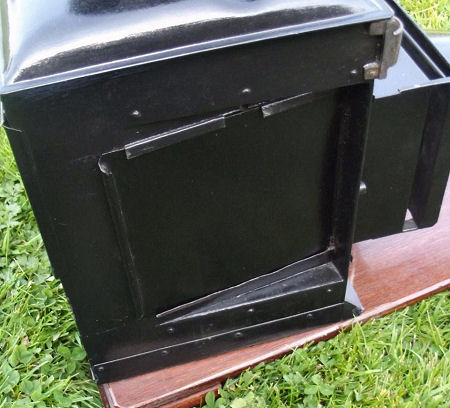 |
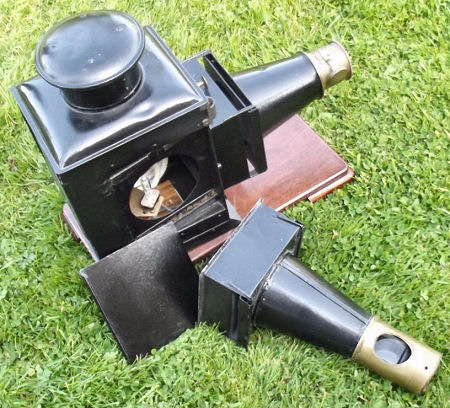 |
| The lantern can easily be used as a normal magic lantern by removing the slide holder and optical system from the side wall and replace them with a metal plate. | |
 Advertisement in 'The Magic Lantern', Arrival of the new duplex lantern, 1879. |
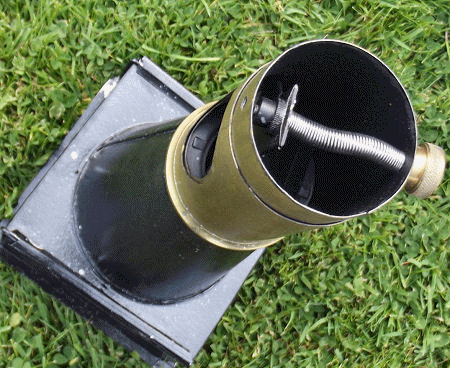 This new lantern is duplex in form, being fitted with one optical system projecting in front, and another projecting from one side. The light through the first system is transmitted on to the screen directly in the usual way. At the extremity of the other system is fixed a prismatic lens, by which means a disk can be projected on to the screen central with the other. The oxyhydrogen jet is arranged on a pivot, which is a fixture in the bottom of the lantern, the centre of rotation being as near the outside surface of the lime cylinder as possible, and by rotating the burner through about a quarter of a circle, the light is brought central with the condenser alternately, and simultaneously the mechanical dissolver opens and closes the objectives. |
|
To compensate for any loss of light occasioned by the use
of the prism, the condenser of this system is made somewhat shorter in focus
than the other one, evenness of illumination being thereby secured. Both
objectives are made achromatic, and the definition of the one to which the prism
is attached is in no way inferior to the ordinary one. The jets never require
adjustment, as every lantern is put to a practical test before being sent out:
the best position for the jet being thereby obtained, further adjustment
becomes unnecessary. The dissolving apparatus is adjustable and very efficient.
The conical fronts are easily detached, and if required it can be used as a
single lantern. The whole lantern is of metal. It's small dimension are much in
its favour, the whole packing into a small box, easily carried in the hand. These
desiderata are certain to make it a favourite with those who whish for an
apparatus of extreme portability.... We have thoroughly tried the new lantern, and are charmed with it in every way. It is lighted in a minute, easily adjusted, and gives entire satisfaction. |
|
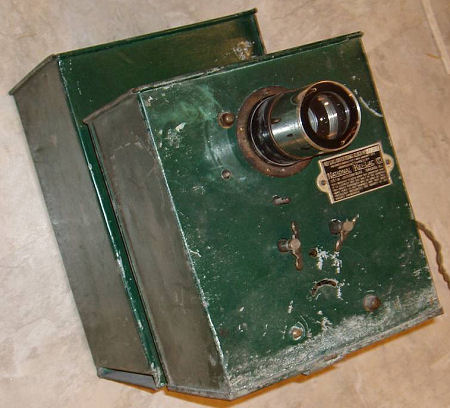 |
Kei-Lac advertising clock.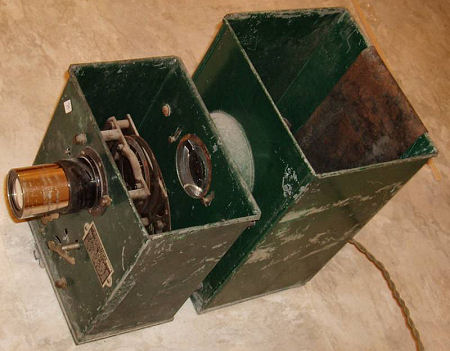 |
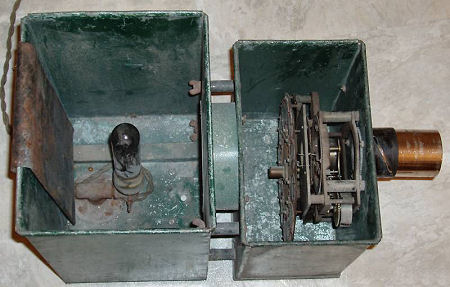 |
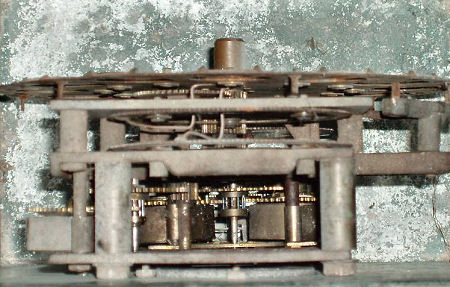 |
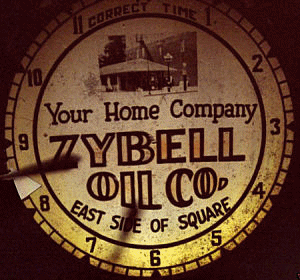 |
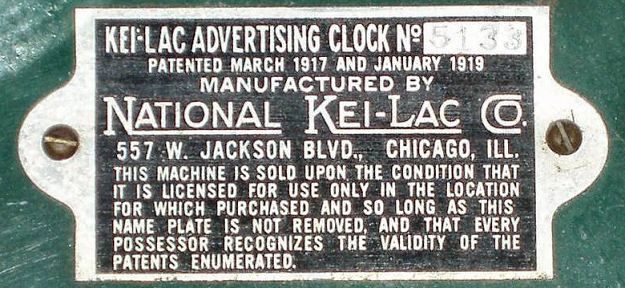 |
|
A great old
advertising projector that has an electric clock mechanism to advance the slides
automatically. The advertising slides are mounted in a revolving disc. Manufactured by the National Kei-Lac Co. Chicago. Ill. USA. |
|
| Another vintage theatre magic lantern from National Kei-Lac Co. of Chicago. The disc with 12 circular slides includes advertising from Holsum Bread, Marshall Field & Company, Mutual Ice Co., Crosley Radio, Modern Bakery, Mrs. McCollums gift shop & more. Added is awesome paperwork including a sample book, theatre contracts, order forms, spec sheets and more as shown. | |
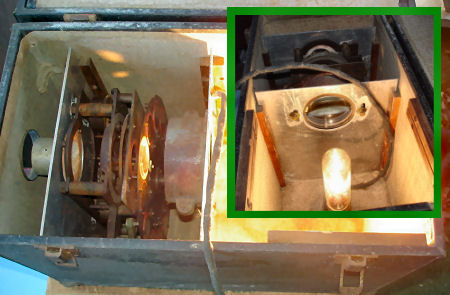 |
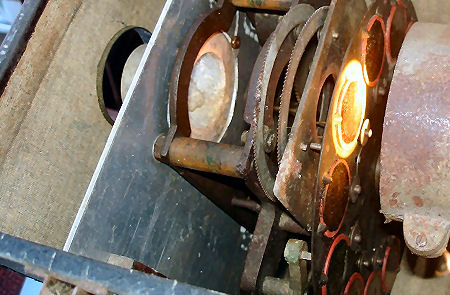 |
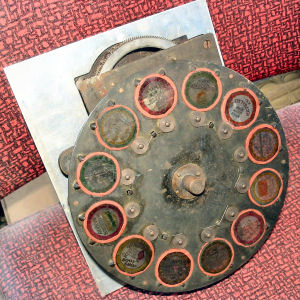 |
 |
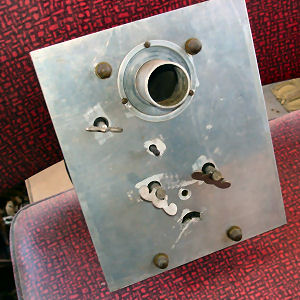 |
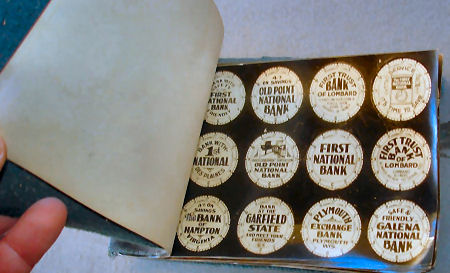 |
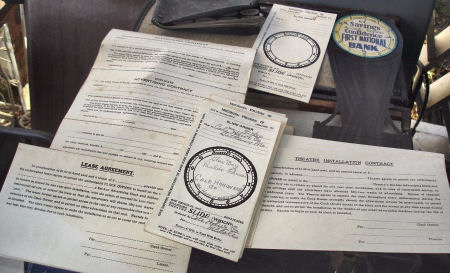 |
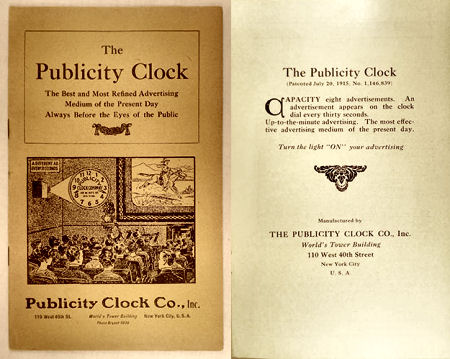 |
 |
| The cover page of this booklet reads, "The Publicity Clock. The best and most refined advertising medium of the present day. Always before the eyes of the public. Publicity Clock Co., Inc. 110 West 40th St. World's Tower Building. New York...." On the cover page it states that it was patented in 1915. The Publicity Clock Company, an advertising firm in New York City from around 1915 to at least 1930, placed advertisements in local movie theatres by means of the Publicity Clock, a device that projected the image of a working clock face with a repeating sequence of advertisements displayed within the dial. It was run for a number of years by Leslie Neuberger. Inside it explains and shows pictures of the device (a magic lantern) and the many ways it could be used. The company would solicit advertisers and the theatre would receive a portion of the proceeds. Size is 12.7 x 21.6 cm with 6 fold-out pages. | |
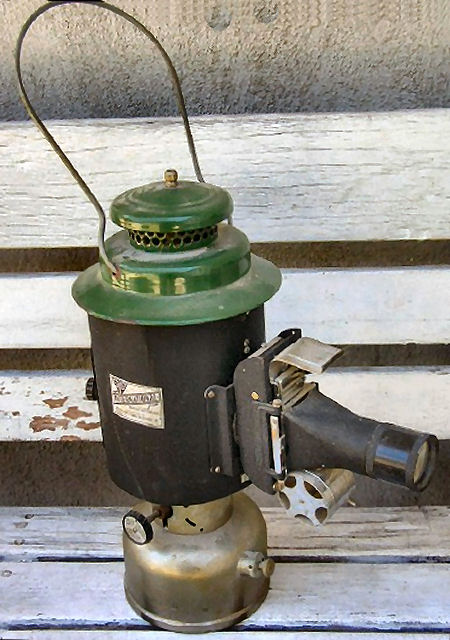 |
 |
| This is a wonderful vintage Coleman gas lantern that has been converted into a magic lantern. It is marked on the side 'SVE International For use with Gasoline or Kerosene Manufactured by Society for Visual Education Inc. Chicago, Ill'. The lens reads 'Series 0 5" Focus S.V.E. Anastigmatic Projection'. The Kerosene part reads on the middle '237 Generator No 237-299'. Then on the bottom of the Kerosene part it reads 'Coleman Trade Mark Regd. The Sunshine of The Night'. Made in the United States of America. It is approx. 24" (61 cm) tall when the handle is up, 18" (46 cm) tall without the handle, and from the lens to the back of the piece it is 13" (33 cm) wide. | |
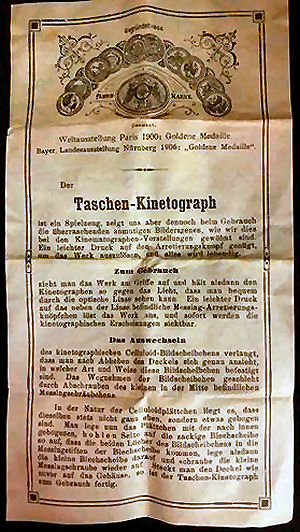 Taschen-Kinetograph, Ernst Plank. |
 |
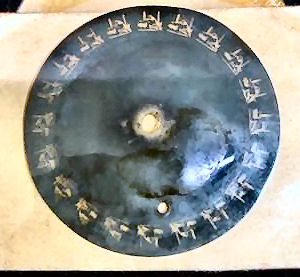 |
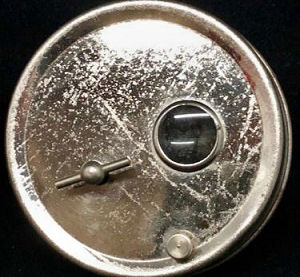 |
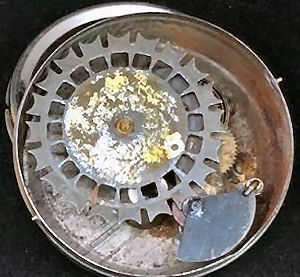 |
|
|
Though
this is not really a magic lantern, this device is so rare and special that it
certainly belongs on this page. It is a Taschen-Kinematograph, a
pocket-cinematograph made by E.P. (Ernst Plank) in 1895. After
winding the clockwork, one must held up the device to the light and can look
through the lens. After a slight pressure on the small button, a short film is shown. Dimensions 8 cm diameter and 5 cm high; the diameter of the two disc-shaped films supplied is 5 cm. |
||
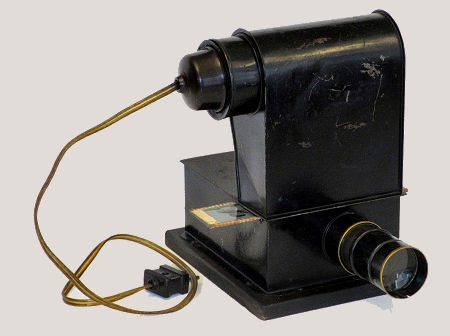 |
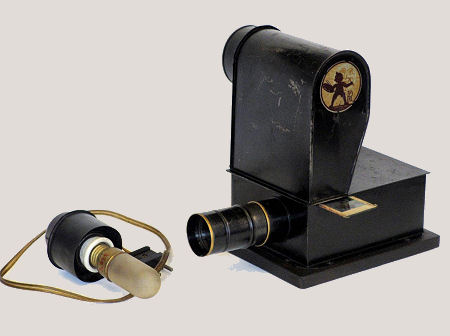 |
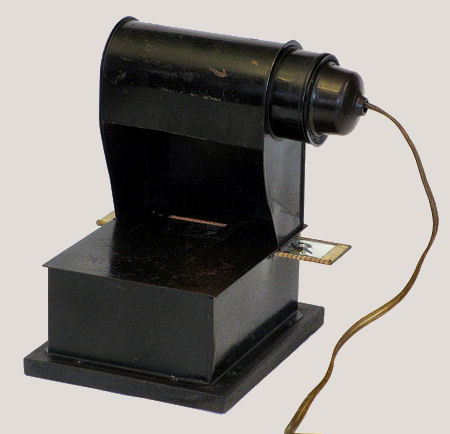 Actually this extraordinary magic lantern is just a magic lantern, but the placing of the lamp, the lack of a condenser and the presence of a sloped mirror that casts the light through the projection lens, makes of this projection lantern certainly a very special device. |
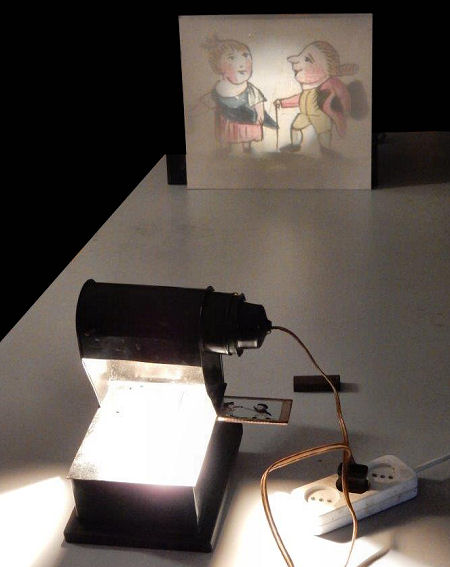 |
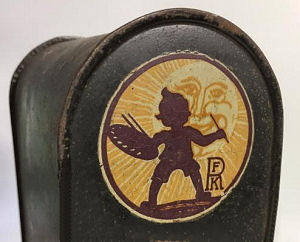 |
Judging by the logo, in all probability this lantern is sold and used as an aid for painters. Artists could project an image with this onto a canvas or panel and trace it with charcoal or pencil. This method was (and is) used extensively by many famous artists. Across this rough drawing than the painting could be made. The beautiful logo contains the initials R, F and K; unfortunately it is not known where these initials are standing for. Restoration and photo's: Charles Barten. |
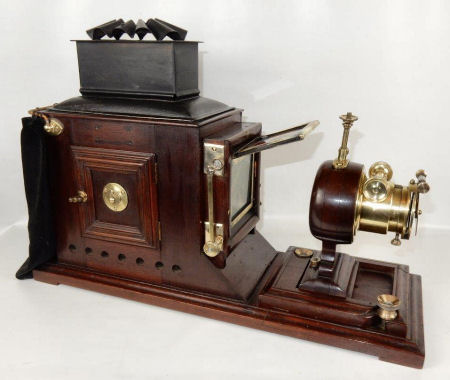 |
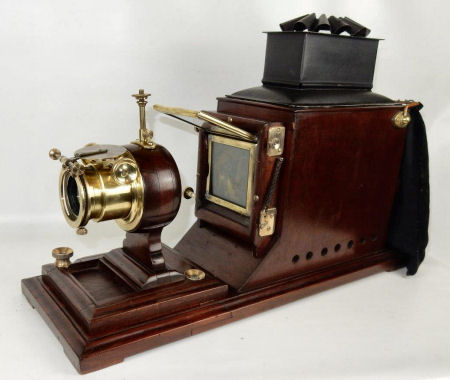 |
 |
 |
| What makes this magic lantern so special is the unique slide changing system. Unfortunately, the brand plate was removed by a previous owner so it is not clear who the manufacturer is of this beautiful projector. The lantern was very professionally restored by master restorer Charles Barten (photos below). | |
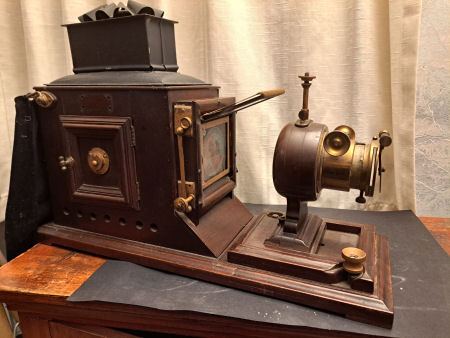 |
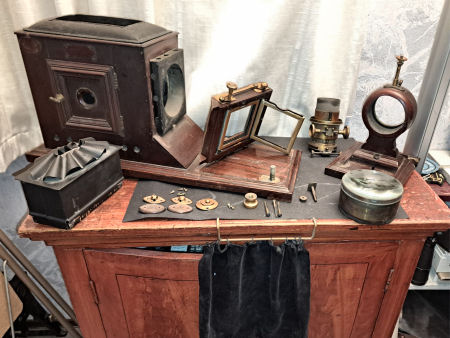 |
|
More unusual lanterns.... |
|
| |
©1997-2025 'de Luikerwaal' All rights reserved. Last update: 01-02-2025. |
|
